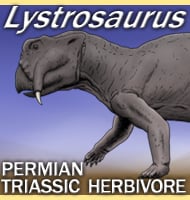Kannemeyeria
In Depth The incredibly broad range of Kannemeyeria fossils indicates that it probably had a worldwide distribution, especially across the southern continents. It is unknown how far north the full extent of Kannemeyeria was, but other similar dicynodonts such as Placerias are known from North America. Kannemeyeria is what you might call a typical large … Read more
